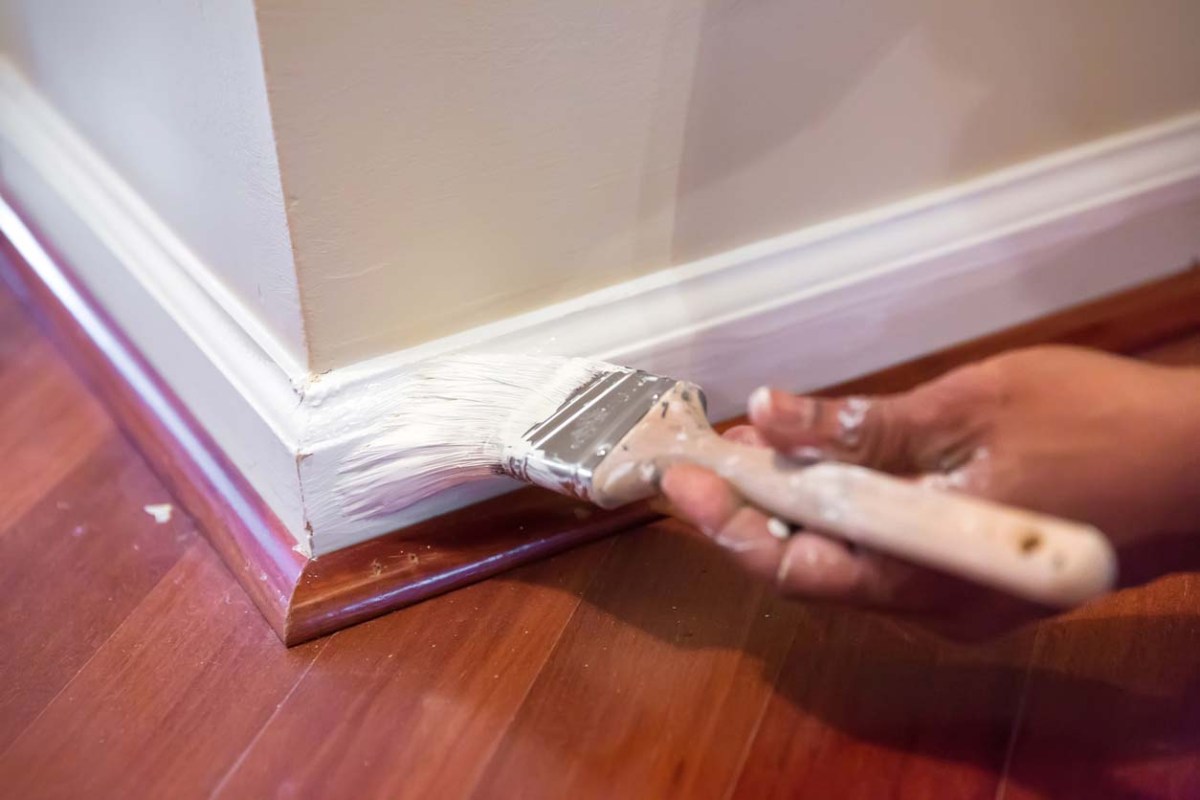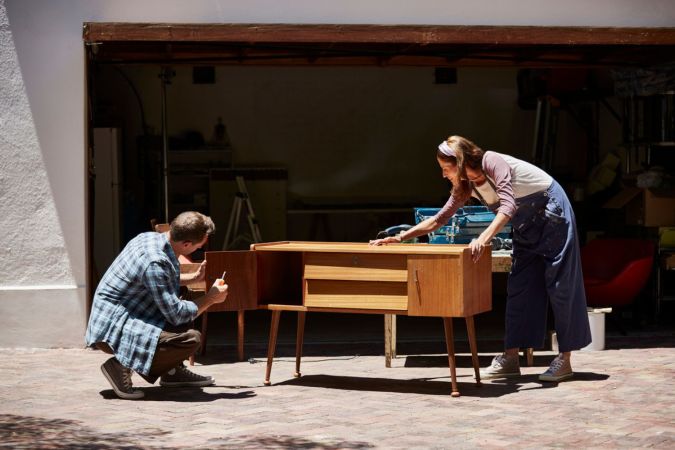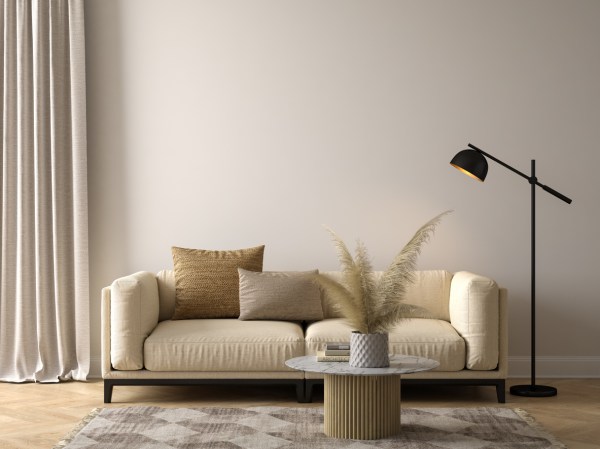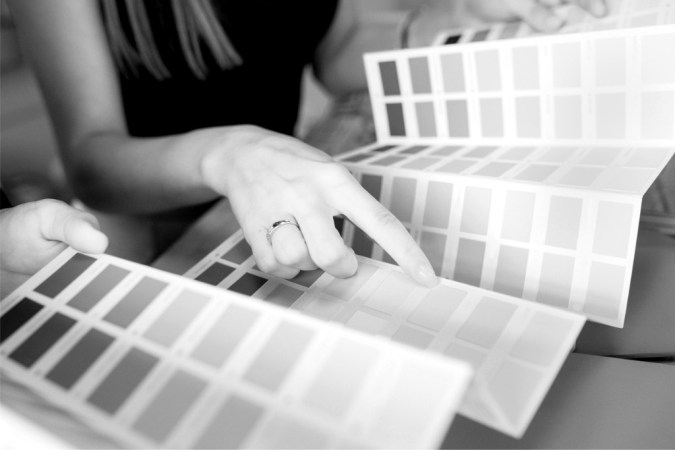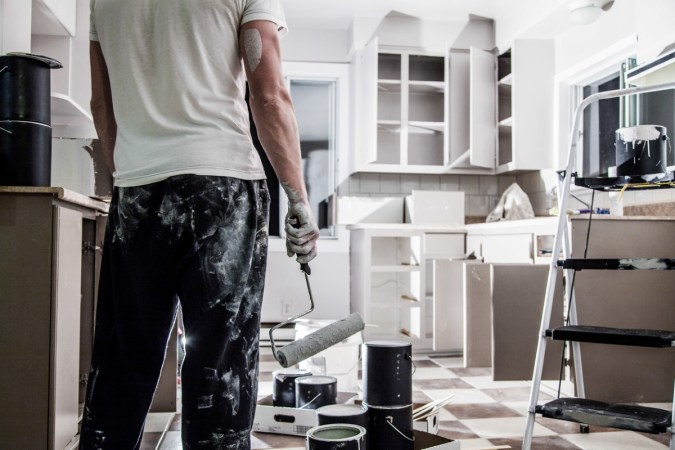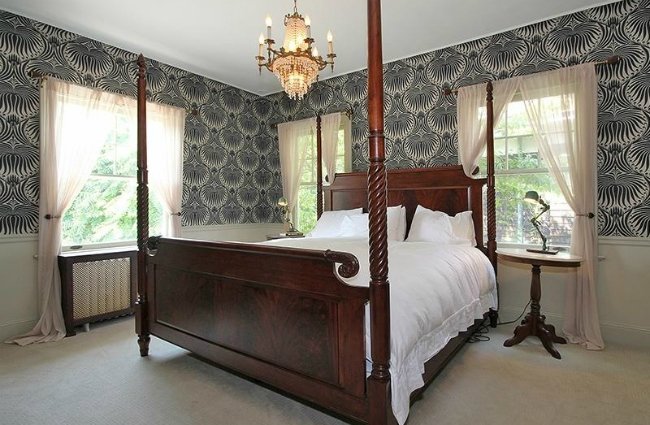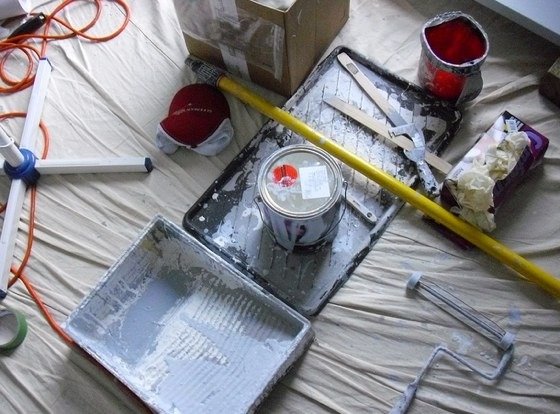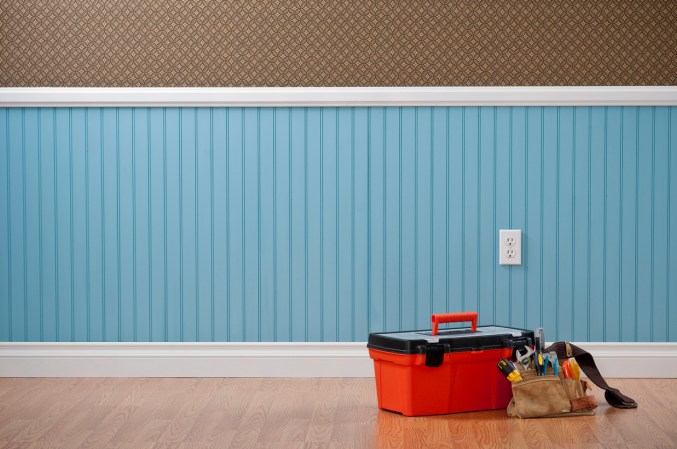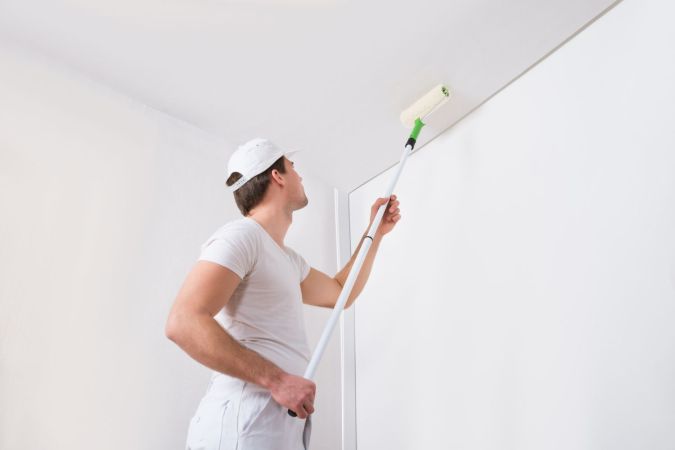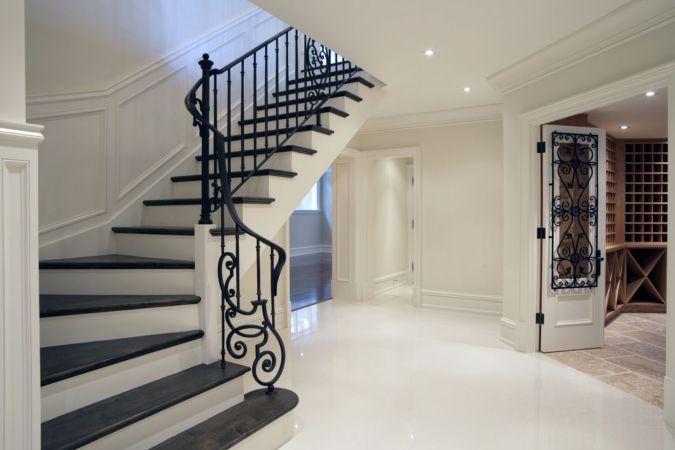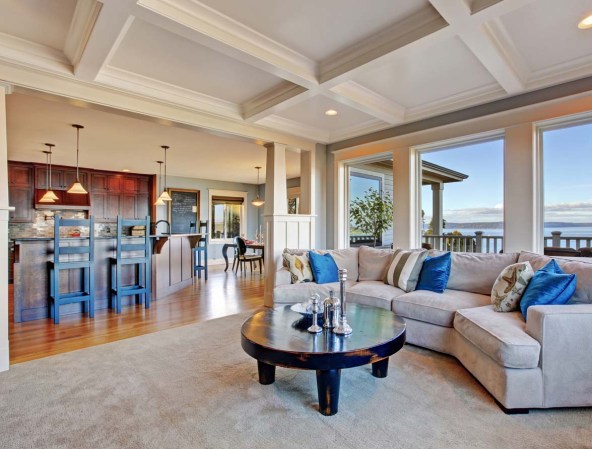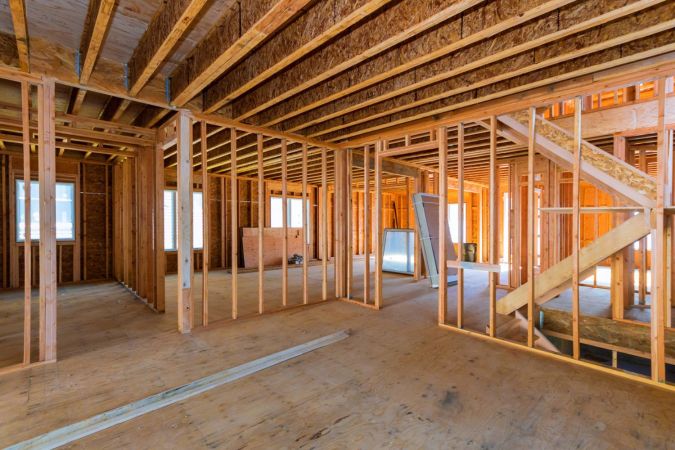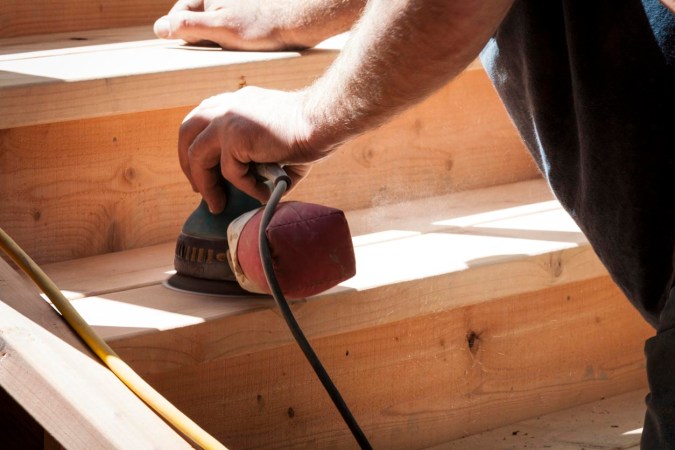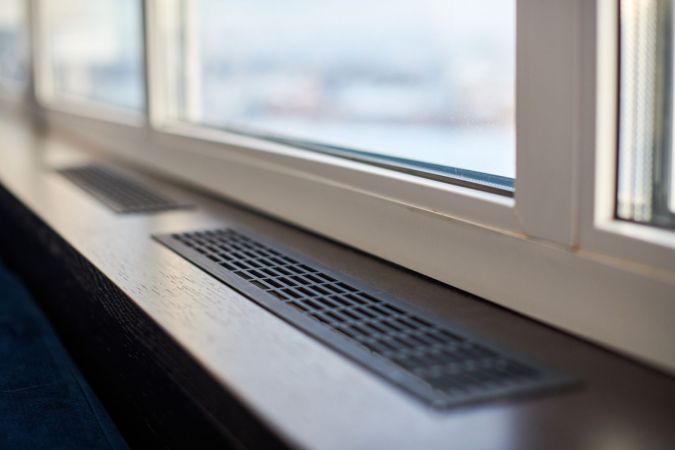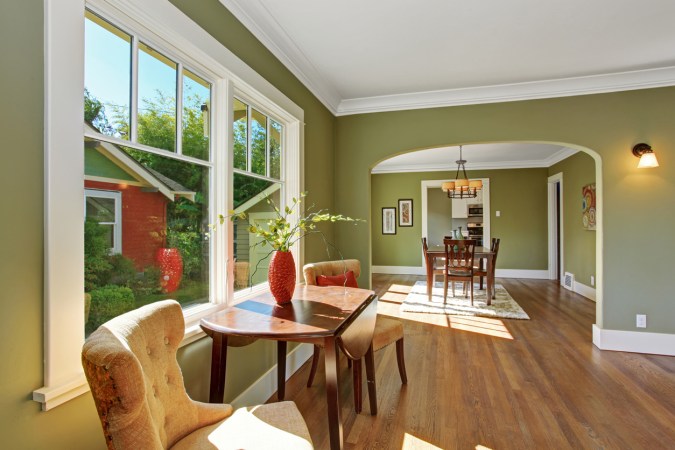We may earn revenue from the products available on this page and participate in affiliate programs. Learn More ›
Highlights
- The average cost to paint trim is $1,250, though many homeowners spend between $500 to $2,500.
- Trim-painting costs vary depending on the size of the room or house, the trim’s condition and material, the type of paint and primer, current labor rates, and several other factors.
- Repairing trim and updating the paint helps improve a home’s overall appearance. Trim that’s in poor condition may indicate underlying issues that homeowners can resolve to ensure their home is protected from water leaks.
- While some homeowners enjoy the time and patience required to paint baseboards or crown molding, others prefer to hire professional painters to handle trim painting in interior rooms or on the home’s exterior.
Peeling or chipped trim is unsightly, and while it’s not the most urgent home improvement project, painting interior and exterior trim quickly updates a tired-looking room or home. Trim refers to baseboards, crown molding, window and door casements, soffits, dormers, and fascia. The cost to paint trim per linear foot typically falls between $1 and $3 or up to $6 for exterior trim, which is significantly lower than the cost to paint a house. According to Angi and HomeAdvisor, the total price range is $500 to $2,500 with the national average at $1,250.
Easy-to-access baseboards and the trim around doors and windows are cheaper to paint, and the task usually maxes out at around $1,500. Dormers, soffits, and fascia, which are typically more difficult to access, will fall on the higher cost range. Other factors that impact the cost include the condition of the trim, the type of paint and primer chosen, labor costs, and more.
Factors in Calculating the Cost to Paint Trim
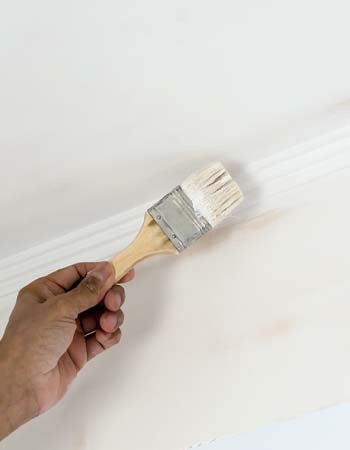
While applying paint on trim isn’t the most difficult renovation job, it is time-consuming, and there are a number of factors that impact the cost. The size of the room, the type of trim and condition it’s in, the trim material, and the paint and primer type, not to mention labor rates, all play into the cost of painting trim. Though some homeowners prefer to learn how to paint trim, others opt to leave the detailed and time-consuming job to a pro when the budget allows.
Room Size
The room size will dictate the number of linear feet of trim to be painted and may include baseboards and crown molding. Depending on the condition of the trim, homeowners may only need to update a room or two, which will cut down on the total cost of trim painting. Combining door and trim paint jobs can help homeowners save on labor and trip fees when they schedule the jobs at the same time.
To calculate the total cost, homeowners can take some measurements to come up with a rough estimate. For instance, painting baseboards will cost between $1 and $5 per linear foot depending on the size of the baseboards and the condition they’re in. A 10-foot-by-20-foot living room has about 60 linear feet of baseboard. By this estimate, painting the trim in an average-size living room will cost between $60 and $300, while the cost of painting a room comes at approximately $1,900.
Trim Type, Condition, and Material
The type and size of the trim, its condition, and the materials required will all factor into the cost of exterior and interior trim paint jobs. The type of trim and its location is one of the bigger factors that determine the cost to paint trim. It will likely cost less to paint simple baseboards and door frames than it will to paint gables and soffits since they’re easier to access. For comparison, it costs between $1 and $5 per linear foot to paint baseboards, yet it costs between $5 and $6 per linear foot to paint gables. The cost to paint crown molding averages $1 to $5 per linear foot.
If the trim is in poor condition, repairing or replacing it will add to the total cost, but it will be a necessary expense since painting over damaged trim will not yield quality or lasting results. If baseboards are in poor condition, it will cost between $720 and $1,300 to replace them.
The material that the trim is made of will also impact the cost. “The cost to paint trim is directly dependent on the trim you will be using,” explains Danielle Nash, a San Francisco–based project director and interior designer with Freemodel. “This is because different materials absorb paint differently. For example, wood trim requires more preparation, priming, and additional coats of paint. This can significantly increase both labor and material costs. On the other hand, materials such as PVC and composite are easier to paint, and this will result in decreased labor and materials.”
| Type of Trim Material | Average Cost per Linear Foot (Materials and Labor) |
| Aluminum | $1 to $6 |
| Brick | $3 to $6 |
| Vinyl | $3 to $6 |
| Wood | $1 to $6 |
Primer and Paint Type
Choosing the best paint for trim is essential to a successful project. For example, exterior trim paint will need to be more durable and weather-resistant than interior trim paint, so it will cost a little more. There are also different types of primer and paint with varying benefits and drawbacks to suit where they’re applied.
Oil-based primer and paint cost between $20 and $70 per gallon, depending on the brand and whether it’s made for the interior or exterior. Latex paint and primer can cost between $15 and $80 per gallon, and it’s ideal for outdoor use since it has a short drying time. Water-based paints cost between $15 and $50 per gallon, and because they resist yellowing, they are another good choice for outdoor trim. Oil, water, and latex paints are all suitable for many interior paint jobs as well. Many homeowners updating their baseboard paint will choose a latex-based paint and primer for convenience.
“Although high-quality weather-resistant paint is a bit pricier, it’s a must for all outdoor trim projects, or really any outdoor painting projects,” advises Nash. “It’s a worthy investment that will save you from needing to paint it again sooner than you would have if you’d used the higher-quality paint.”
Labor
Labor costs to paint trim will vary depending on the contractor, the location of the trim, and whether the painter paints the trim or the walls first. The labor cost to paint baseboard trim or other interior trim is usually less than the labor cost to paint exterior trim. Painting interior trim may require less prep work and fewer accommodations than would be necessary for a second-story roofline, for example. Contractors will typically charge between $20 and $75 per hour to paint trim. Since contractors typically charge by the hour, the total cost will increase if areas are difficult to access or prepare.
Additional Costs and Considerations
Some homeowners may need to consider additional costs involved with painting trim, such as the amount of prep work required, whether trim needs to be repaired or replaced, and if any lead paint testing and removal is required. The prep work and repairing or replacing of damaged trim can significantly increase the cost of the project. And while testing for and removing lead paint is essential in older homes, it can also come with a higher final price.
Prep Work
The amount of prep work that happens ahead of painting wood trim or another trim material will vary for each job, which means each project will need a custom quote. For example, prep work for painting baseboard trim includes cleaning and sanding the surface (each ranging between $0.20 to $0.50 per linear foot), fixing imperfections, caulking the trim edges, and lining the area with painter’s tape. It may also involve removing the existing paint, varnish, or stain, a process that costs between $1 and $3 per linear foot. Homeowners may want to request a set fee for all prep work to avoid being charged per service.
According to Nash, “Exterior trim will require much more preparation than interior trim due to the elements. [More] wear and tear on the trim means [a higher cost].”
Preparing the space before painting baseboards and door trim, protecting the exterior walls, and shielding the roof before painting dormers or fascia are all tasks that will add to the total cost of labor. The amount of prep work needed also depends on the current trim finish. For instance, painting over white trim may not take as much time as prepping and painting the original wood trim.
Lead Paint Testing and Removal
Homes built before 1978 are more likely to have lead paint on the walls and trim. Lead paint can be dangerous to the health and safety of those living in the home, especially children. Exposure to lead can cause serious health issues such as high blood pressure and problems with brain and kidney function and reproductive health. In pre-1978 homes, the existing paint should be tested and removed by a professional if lead is found. Lead paint inspection and testing costs between $300 and $600, while removal averages $8 to $15 per square foot. Lead paint removal costs can add between $1,445 and $5,412 to the total price.
Trim Repairs or Replacement
If the existing trim is in need of repairs or needs to be replaced, homeowners can expect to pay more for both labor and materials. The cost of trim repairs or replacement averages $5.70 to $8.95 per linear foot for baseboards. Installing new crown molding costs about $4 to $15 per linear foot, and installing new door casings costs $1 to $6 per linear foot. Exterior soffit and fascia repairs cost about $10 per linear foot, and dormer repairs cost between $250 and $1,000.
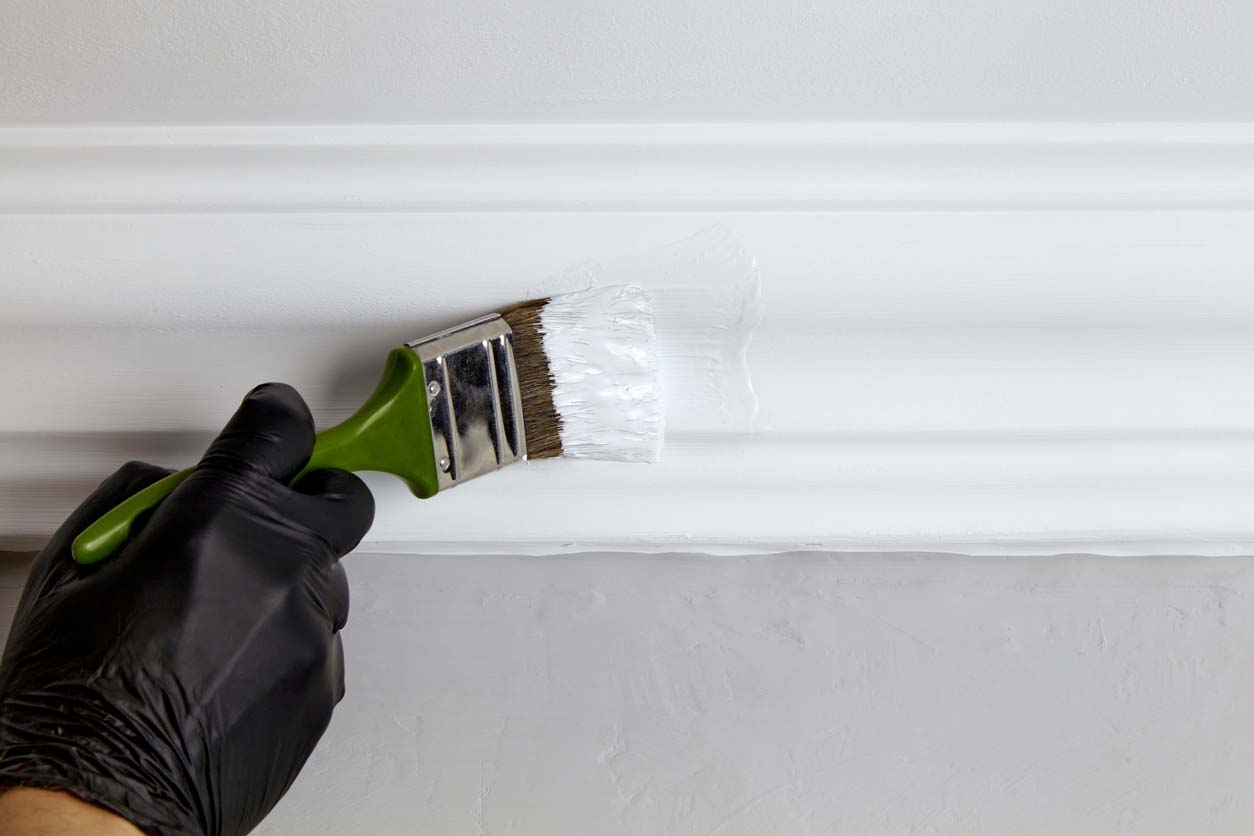
Cost to Paint Trim by Type
When people think of trim, they likely imagine baseboards and crown molding, but in reality, there are other areas that are considered trim. For example, homeowners may see that it’s time to freshen doors and windows, dormers, downspouts, eaves, fascia, soffits, and gables, not to mention door and window casing and also chair and picture rails. The cost to paint each type of trim depends on the labor needed to prep and paint the material and the amount of supplies needed to complete the job.
| Type of Trim | Average Cost Per Linear Foot (Materials and Labor) |
| Baseboards | $1 to $5 |
| Chair and picture rails | $1 to $6 |
| Crown molding | $1 to $5 |
| Doors and windows | $1 to $4 |
| Dormers | $3 to $5 |
| Downspouts | $5 to $6 |
| Eaves, fascia, and soffit | $3 to $6 |
| Gables | $5 to $6 |
Baseboards
Baseboards are installed along the floor at the bottom of a wall. These are typically easy to access once furniture has been moved out of the way, and their lower location doesn’t require any ladders or special equipment to reach them. Painting baseboards costs between $1 and $5 per linear foot.
Chair Rail and Picture Rail
Chair or picture rails are typically installed about halfway up the wall and often exist around the perimeter of the room or along a single wall. Similar to baseboards, they are easy to access and are often made of wood. Painting chair and picture rails made of wood typically costs between $1 and $6 per linear foot. Choosing a contrasting color for a chair or picture rail can add a visual pop to the room and enhance its role as a design feature.
Crown Molding
The cost of crown molding painting falls between $1 and $5 per linear foot. Crown molding can cost more to paint than baseboards or chair rails since it runs along the ceiling and can be more difficult to access than other types of interior trim. Prepping the area to protect the floor from dripping paint may also take extra time. The intricate patterns cut into the crown molding can require more labor-intensive work to ensure each surface has an even coat of paint.
Doors and Windows
Painting window trim or door trim can be a quick upgrade, especially when the homeowner is wondering if they should paint the house before selling. It costs between $1 and $4 per linear foot to paint the casing trim around doors and windows, though the job may require removing the doors to gain access to the entire door frame. Painting the trim on exterior windows on the second or third stories will require a tall ladder or lift, and this is best left to professionals who have experience working on ladders.
Dormers
Dormers are located just below the roofline and pose more of a challenge than more easily accessible areas. This trim may also need more extensive prep work since it experiences daily exposure to weather conditions of all kinds. Contractors will recommend a more durable paint for exterior applications, which can come at a higher cost. Dormer trim painting typically costs between $3 and $5 per linear foot.
Downspouts
While painting downspouts may not be the first thing people consider when updating trim, it’s a common exterior house painting project that costs between $5 and $6 per linear foot. Downspouts are typically made of aluminum, and it’s necessary to have a clean surface and acrylic paint to complete the job. The added challenge of accessing downspouts and thoroughly cleaning them can make this project more expensive than other projects.
Eaves, Fascia, and Soffit
Eaves, fascia, and soffit may require some repairs before painting since they are constantly exposed to the elements. They are also more difficult to access than interior trim, so most homeowners will pay between $3 and $6 per linear foot to get them refreshed with a coat of paint.
Gables
It costs between $5 and $6 per linear foot to paint most gables, with a higher cost resulting from the ladders needed to access them. Gables are the flat part of a wall beneath a pitched roof, whereas a hip roof extends the roofline down in a flat line around the entire house. Like other exterior trim, gables are exposed to the weather, so they may need cleaning or repairs before they can be painted. Gables may also require more durable paint that is able to stand up to the effects of wind, rain, snow, and sunlight.
Do I need to paint my trim?
The condition of trim is often overlooked until it becomes clear that the trim is faded, chipped, or otherwise damaged. Then it’s painfully obvious that some new paint for trim is needed. But since trim isn’t essential to the function or safety of the house, painting it may be a project that’s continually delayed for other more important projects.
“Since I specialize in presale home renovations, I will say a critical time to paint trim is when selling the home,” says Nash. “It’s a smaller undertaking and makes such a significant difference. It truly makes the home look brand new. [However], I’d opt to replace the trim if you’re looking to get the highest ROI [return on investment].”
In some cases, though, painting trim should move to the top of the to-do list. Visible damage or peeling and bubbling paint might be a sign that there are more significant issues affecting the trim, such as water leaks. Faded or stained paint may not be a sign of concerning issues, but painting faded trim can offer a significant upgrade in the appearance of the interior or exterior of the home. The best trim colors for a house will depend on the existing colors or style of the home.
Visible Damage
If the trim is visibly damaged, it can be both unsightly and cause for concern. Some damage requires minimal repairs, such as sanding and filling holes with the best wood fillers. If the damage is severe or the result of another issue such as water damage, then the root cause should be fixed first and the trim replaced and painted.
Faded or Stained Paint
If the trim is faded or the paint is stained, then painting it can provide a welcome refresh and give the room or whole house new life. If the issue is just faded or stained paint, then painting the trim is relatively simple and may only require cleaning, a light sanding, and a coat of primer before the actual painting begins.
Peeling or Bubbling Paint
Peeling or bubbling paint can be a sign that there is excess heat or moisture in the room. If this is the case, the paint should be scraped from the trim before the trim is cleaned and sanded. If there are underlying issues that caused the paint to peel or bubble, it’s important to remedy the root cause before repainting the trim. Otherwise, the new paint may end up with the same problems.
Mold or Mildew
Instead of painting over mold and mildew, it’s best to take steps to remove it as well as the cause. While painting over mold and mildew will hide the problem, it doesn’t actually solve the problem or remove the mold. That means the roots of the mold will simply grow stronger and reappear in the same place. If the homeowner is painting trim in a mold- and mildew-prone area such as a bathroom or basement, then using mold-resistant paint can help mitigate any future mold problems. Consulting one of the best mold removal companies (such as ServiceMaster Restore or ServPro) is also considered a viable course of action when mold is suspected.
Painting Trim: DIY vs. Hiring a Professional
Handy homeowners may be able to take on an interior DIY trim-painting project if they have the patience and attention to detail necessary to do a neat job. This job doesn’t require many specialized skills, but it does require some supplies, such as the best paint brushes for trim, painter’s tape, cleaning supplies, and sandpaper. While simpler than painting an entire room, trim painting can be time-consuming, so many homeowners prefer hiring one of the best house painters (such as CertaPro Painters or 360 Painting) to save them time and effort. If the house was built before 1978 or the homeowner suspects lead paint was used on the original trim, a lead inspection should be conducted by a certified professional to ensure the safety of the home’s residents.
Hiring a professional for trim painting can also benefit homeowners since the pro is likely able to replace any trim that’s too damaged to repaint. A pro can also recommend specialists to deal with any mold and mildew issues. Most importantly, professional painters are experienced at working on ladders to safely refresh the appearance of soffits and gables, which are more difficult for homeowners to reach.
How to Save Money on the Cost to Paint Trim
While painting trim isn’t the most expensive home improvement project, it still comes with a price tag. For homeowners on a budget, there are a few ways to save money on the cost to paint trim.
- Combine paint jobs. It may seem counterintuitive, but when homeowners have other painting projects on the list, it may cut down on the total cost to combine the jobs since the painter will already be there. Homeowners often get a volume discount when they’re considering the cost to paint the ceiling or walls.
- DIY prep work. Homeowners who have the skills and time can clean, repair, and sand the trim before the painter arrives to reduce labor costs.
- Clear the area. Whether indoors or outdoors, homeowners can ensure easy access to the trim and reduce the extra time it takes for painters to get started.
- Ask about leftover paint. Many painters will have leftover paint and primer from other jobs. If the colors match and the paint is in good condition, homeowners may pay less for the paint since it’s not brand new. Painting trim white is a common choice, which means painters may have lots of shades of white available.
Questions to Ask About Painting Trim
Hiring a painter means homeowners are trusting that pro to work on the interior or exterior of their home. During the vetting process, it’s helpful to ask potential painters a few questions to feel comfortable with the company and the process.
- Are you licensed, bonded, and insured?
- Have you ever painted interior or exterior trim?
- How long have you been a professional painter?
- How do you prepare and protect the area before beginning?
- Do you provide a written quote?
- Does the quote include prep work and repairs?
- What can I do to prepare my home for the project?
- Will you be doing the work, or do you use subcontractors?
- Do you guarantee your work?
- Who do I contact if there is a problem after the work is complete?
- What type of paint do you recommend using?
- Do you supply the paint, or will I need to buy it?
FAQs
Painting trim on the interior or exterior of the home can give it a much-needed refresh. Hiring someone to complete the work can save homeowners time and prevent mistakes that might require fixing the trim later. Homeowners may have additional questions about the process of painting trim in their search to understand the potential costs of this project.
Q. How many coats of paint should you apply on trim?
Painting trim typically requires a coat of primer and at least two coats of paint to ensure a smooth and long-lasting finish. The primer hides any imperfections on the trim itself and helps the paint adhere to the wood for a stronger bond. The first coat of paint creates a base of color that the second coat builds upon to create a smooth finish.
Q. How many gallons of paint do you need for trim?
While trim is measured in linear feet, the amount of space that a gallon of paint will cover is measured in square feet. So to determine how much paint is needed, painters will measure the length and width of the room and multiply those numbers to calculate the total square footage. A standard gallon of paint will cover approximately 400 square feet of trim with two coats of paint.
Q. How long does it take to paint trim?
It typically takes between 5 and 25 hours to paint trim. The actual time that it takes depends on how many repairs are needed, how long it takes to clean and prepare the surface, the amount of trim that needs to be painted, and the type of trim paint chosen. Exterior trim-painting jobs typically take longer than painting interior baseboards. If the trim needs to be replaced or the trim itself is wider than standard trim, the job will take longer. Painting door trim takes about as long as painting baseboards.
Sources: Angi, HomeAdvisor, Fixr, HomeGuide

